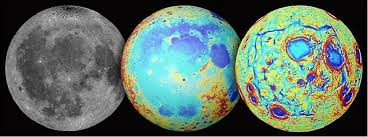
Breaking News
 Reimagining money: the rise and reach of stablecoins
Reimagining money: the rise and reach of stablecoins
 Ken Burns' Documentary on the American Revolution: An Inspirational Treasure...
Ken Burns' Documentary on the American Revolution: An Inspirational Treasure...
 All of these nouns have been like ya know like replaced like with like I'm all like ya know...
All of these nouns have been like ya know like replaced like with like I'm all like ya know...
 The same color revolution we initiated in Ukraine is happening here
The same color revolution we initiated in Ukraine is happening here
Top Tech News
 Latest Comet 3I Atlas Anomolies Like the Impossible 600,000 Mile Long Sunward Tail
Latest Comet 3I Atlas Anomolies Like the Impossible 600,000 Mile Long Sunward Tail
 Tesla Just Opened Its Biggest Supercharger Station Ever--And It's Powered By Solar And Batteries
Tesla Just Opened Its Biggest Supercharger Station Ever--And It's Powered By Solar And Batteries
 Your body already knows how to regrow limbs. We just haven't figured out how to turn it on yet.
Your body already knows how to regrow limbs. We just haven't figured out how to turn it on yet.
 We've wiretapped the gut-brain hotline to decode signals driving disease
We've wiretapped the gut-brain hotline to decode signals driving disease
 3D-printable concrete alternative hardens in three days, not four weeks
3D-printable concrete alternative hardens in three days, not four weeks
 Could satellite-beaming planes and airships make SpaceX's Starlink obsolete?
Could satellite-beaming planes and airships make SpaceX's Starlink obsolete?
 First totally synthetic human brain model has been realized
First totally synthetic human brain model has been realized
 Mach-23 potato gun to shoot satellites into space
Mach-23 potato gun to shoot satellites into space
 Blue Origin Will Increase New Glenn Thrust 15-25% and Make Rocket Bigger
Blue Origin Will Increase New Glenn Thrust 15-25% and Make Rocket Bigger
 Pennsylvania Bill – 'Jetsons Act' – Aims To Green-Light Flying Cars
Pennsylvania Bill – 'Jetsons Act' – Aims To Green-Light Flying Cars
Grail satellite analysis indicates lava tubes on the moon could be up to 1000 to 5000 .....

Like the lava tubes of Hawaii and Iceland, these structures probably formed when underground rivers of molten rock ran dry, leaving behind a cylindrical channel. On Earth, such structures max out at around 30 meters across, but the gravitational data suggest that the moon's tubes are vastly wider.
Other satellites had found the openings of large lunar lava tubes and caves
The Lunar Reconnaissance Orbiter has now imaged over 200 pits that show the signature of being skylights into subsurface voids or caverns, ranging in diameter from about 16 feet (5 meters) to more than 2,950 feet (900 m), although some of these are likely to be post-flow features rather than volcanic skylights.
The Chandrayaan-1 orbiter imaged a lunar rille, formed by an ancient lunar lava flow, with an uncollapsed segment indicating the likely presence of a lava tube near the lunar equator, measuring about 2 km (1.2 mi) in length and 360 m (1,180 ft) in width



